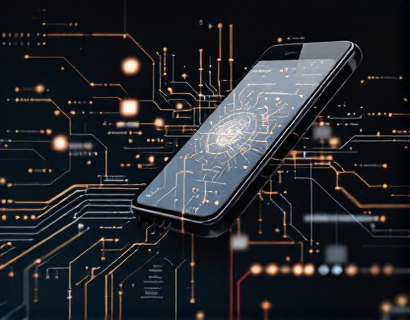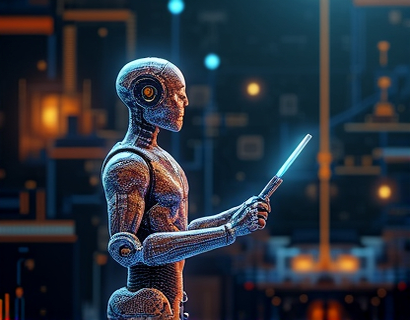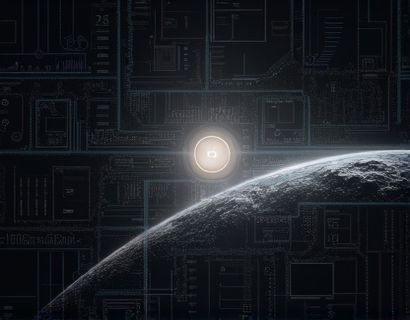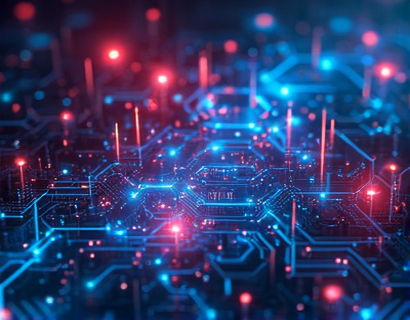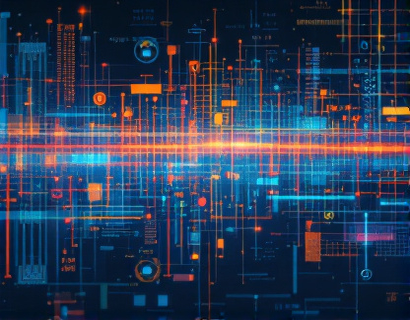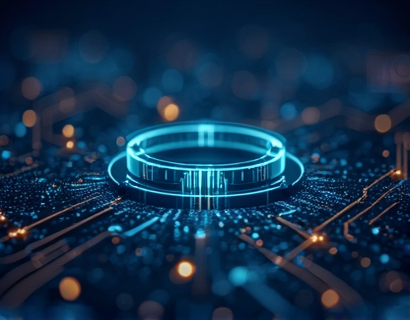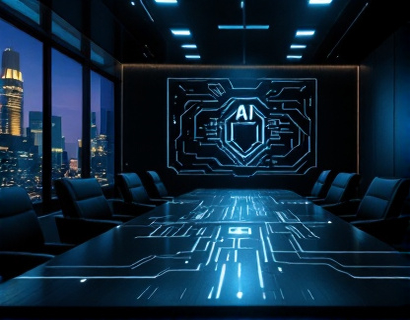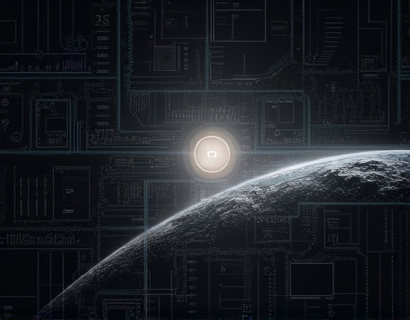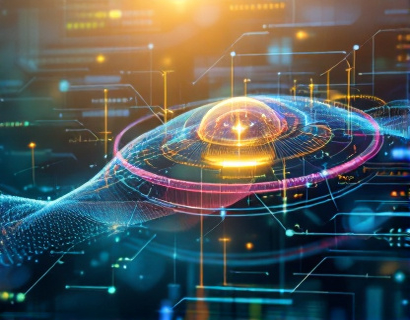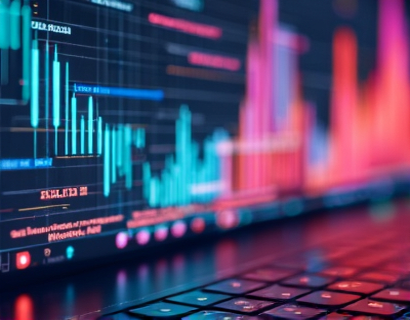Harnessing the Synergy of Crypto and AI: Driving Next-Gen Digital Transformation
The intersection of cryptocurrency and artificial intelligence (AI) is giving birth to a new era of digital transformation, one that promises to redefine how we interact with technology. This convergence is not just a technological curiosity but a powerful force reshaping industries and creating more efficient, secure, and seamless user experiences. As we delve into this topic, it's essential to understand the fundamental components of both crypto and AI and how they complement each other to drive innovation.
Understanding Cryptocurrency and AI
Cryptocurrency, at its core, is a digital or virtual currency that uses cryptography for security and operates on a decentralized network, typically a blockchain. This decentralized nature eliminates the need for intermediaries, making transactions faster, cheaper, and more transparent. On the other hand, AI refers to the simulation of human intelligence processes by machines, especially computer systems. These processes include learning (the acquisition of information and rules for using it), reasoning (using rules to reach approximate or definite conclusions), and self-correction.
When combined, cryptocurrency and AI create a synergy that enhances the capabilities of both technologies. AI can optimize blockchain networks, improve transaction processing, and enhance security measures, while cryptocurrency provides a robust and decentralized infrastructure for AI applications to thrive on.
The Role of AI in Cryptocurrency
AI plays a pivotal role in the cryptocurrency ecosystem by addressing some of its most pressing challenges. One of the primary applications of AI in crypto is in market analysis and prediction. Traditional methods of analyzing market trends are time-consuming and often inaccurate. AI algorithms, however, can process vast amounts of data in real-time, identifying patterns and making predictions with a high degree of accuracy. This capability is invaluable for traders and investors looking to make informed decisions.
Another significant area where AI shines is in enhancing security. Cryptocurrency exchanges and wallets are prime targets for cyberattacks due to the high value of digital assets. AI-driven security systems can detect and mitigate threats more effectively than traditional methods. Machine learning models can identify unusual patterns and behaviors, flagging potential security breaches before they occur. Additionally, AI can enhance the authentication process through biometric verification, adding an extra layer of security.
AI-Powered Blockchain Optimization
Blockchain technology, while revolutionary, faces scalability and efficiency issues. Transaction processing times can be slow, and the network can become congested, leading to higher transaction fees. AI can optimize blockchain performance by dynamically adjusting network parameters, such as block size and difficulty levels, based on real-time data. This adaptive approach ensures that the network remains efficient and scalable, even during peak usage periods.
Smart contracts, self-executing contracts with the terms directly written into code, can also benefit from AI. AI can automate the execution of smart contracts by analyzing conditions and ensuring that all parties adhere to the agreed-upon terms. This not only speeds up the process but also reduces the risk of human error and fraud.
Enhancing User Experiences with AI in Crypto
The user experience in the crypto space can be improved significantly through AI. User interfaces can be personalized based on individual preferences and behavior, making the platform more intuitive and user-friendly. Chatbots powered by AI can provide 24/7 customer support, answering queries and guiding users through complex processes. This level of automation not only enhances user satisfaction but also reduces operational costs for crypto platforms.
Furthermore, AI can facilitate better asset management. Robo-advisors, AI-driven investment management tools, can create and manage customized investment portfolios based on a user's risk tolerance and financial goals. These tools can rebalance portfolios in real-time, ensuring optimal performance and maximizing returns.
Decentralized AI Applications
The true potential of combining AI with cryptocurrency is seen in decentralized AI applications. Decentralized AI platforms allow for the creation and deployment of AI models without the need for centralized control. This democratization of AI ensures that developers and researchers can collaborate and innovate without barriers. Blockchain technology ensures that data used for training AI models is secure and tamper-proof, maintaining the integrity of the AI systems.
One notable example is decentralized machine learning (ML), where data and computation are distributed across a network of nodes. Each node contributes to the training process, and the model is updated collectively. This approach not only enhances privacy but also improves the robustness and generalization of AI models. AI models trained in this manner can be deployed on decentralized applications (dApps), providing users with powerful tools without compromising on security or privacy.
Challenges and Considerations
While the integration of AI and cryptocurrency offers numerous benefits, it also comes with its own set of challenges. One of the primary concerns is regulatory compliance. The crypto space is still largely unregulated, and the introduction of AI adds another layer of complexity. Ensuring that AI-driven crypto applications comply with existing regulations and adapting to new ones is crucial for sustainable growth.
Another challenge is the energy consumption associated with both blockchain and AI. Blockchain networks, particularly those using proof-of-work (PoW) consensus mechanisms, require significant computational power and energy. AI training, especially for complex models, is also energy-intensive. The crypto community is actively exploring more sustainable alternatives, such as proof-of-stake (PoS) and energy-efficient AI algorithms, to mitigate these issues.
Future Prospects
The future of crypto and AI is bright, with numerous potential applications and innovations on the horizon. One exciting area is the development of AI-powered decentralized finance (DeFi) platforms. These platforms can offer a wide range of financial services, from lending and borrowing to derivatives and insurance, all without intermediaries. AI can optimize these services by predicting market movements, assessing risk, and automating transactions.
Another promising direction is the integration of AI with the Internet of Things (IoT) in the crypto ecosystem. IoT devices can generate vast amounts of data, which AI can analyze to provide insights and automate processes. For instance, smart contracts can be triggered based on IoT data, enabling automated and efficient management of physical assets.
Moreover, the convergence of crypto and AI can lead to the creation of new economic models. Tokenized assets, backed by real-world assets or utility, can be managed and traded using AI algorithms, enhancing liquidity and accessibility. This can democratize investment opportunities and create new revenue streams for various stakeholders.
Conclusion
The fusion of cryptocurrency and AI is not just a technological advancement but a transformative force that is reshaping the digital landscape. By leveraging the strengths of both technologies, we can create more efficient, secure, and user-friendly applications that enhance connectivity and innovation. As the field continues to evolve, it is essential for tech enthusiasts and professionals to stay informed and embrace the opportunities presented by this exciting convergence.



